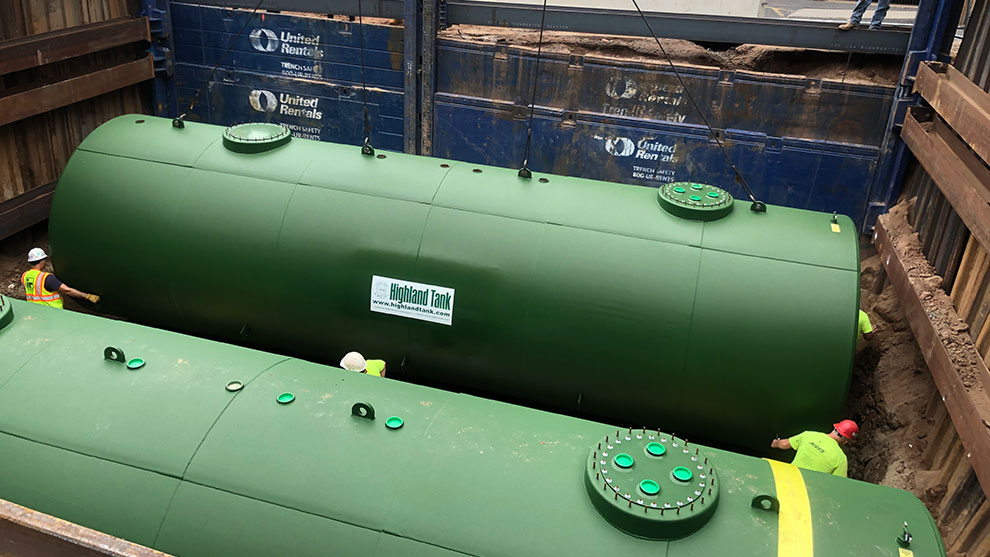Fuel Conversion Underground Storage Tank Removal/Replacement
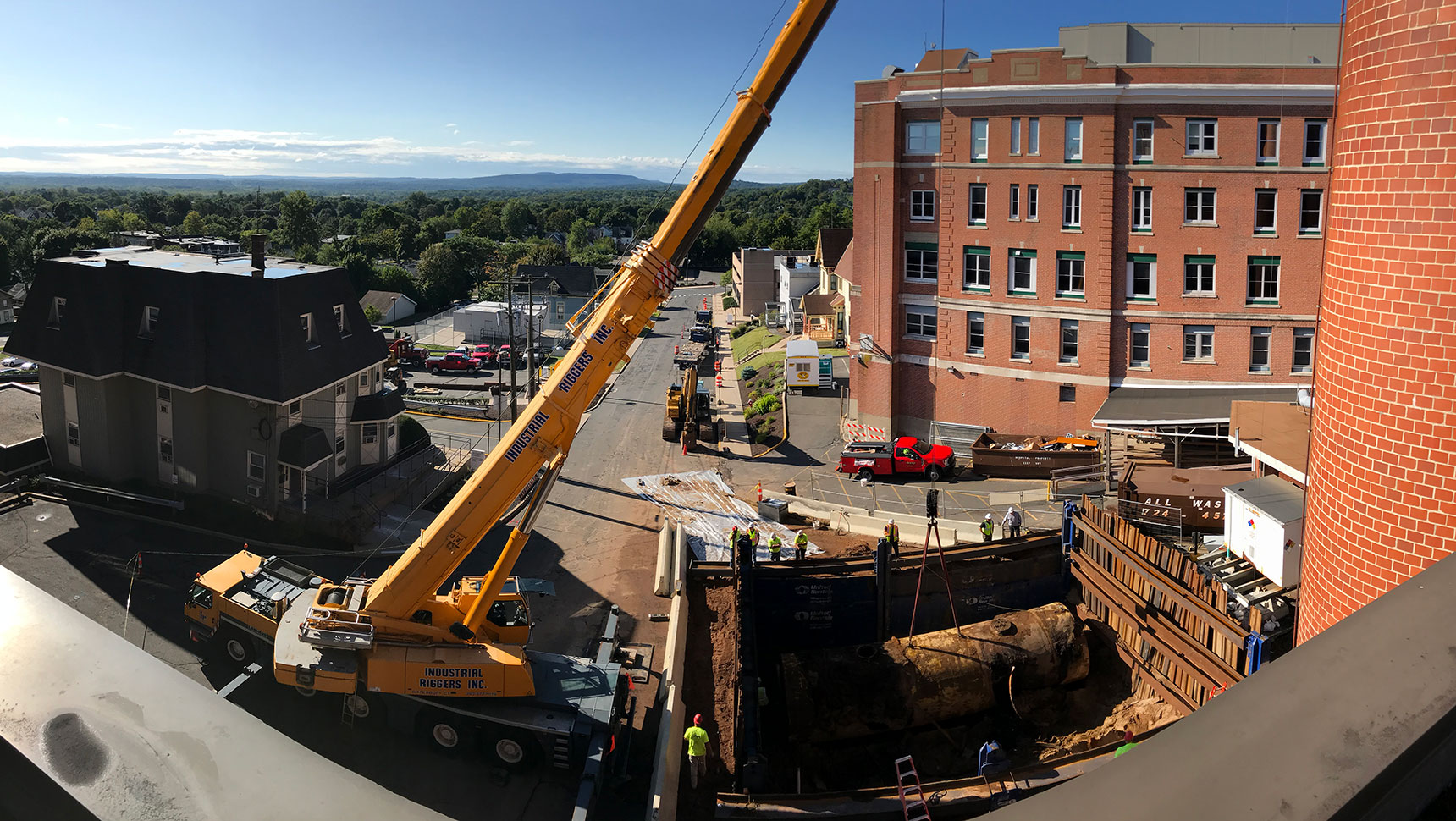

The Hospital of Central Connecticut needed to upgrade their backup fueling system. Though the hospital’s main system is natural gas, their backup heat was provided via an underground storage tank (UST) that supplied No. 6 oil. This project presented three challenges:
The Hospital of Central Connecticut hired Fuss & O’Neill provided design-build and construction services for this critical project.
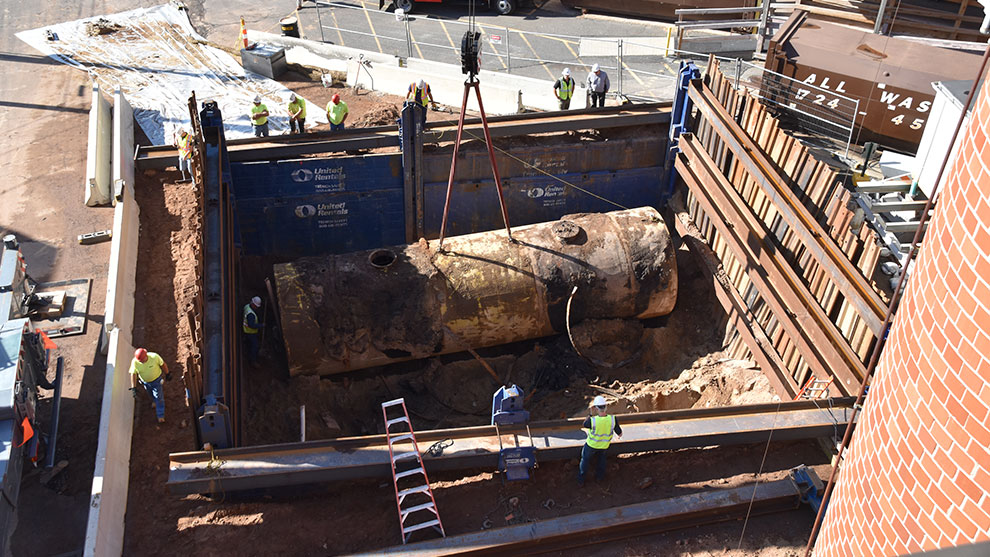
To overcome the major challenges of this project, the design-build team designed a creative approach. To ensure that the hospital had backup fuel to its burners in the event that the hospital’s natural gas supply was interrupted, a temporary 4,000-gallon tank was installed to connect to one of the facility’s three boilers.
Once the conversion was complete, ensuring that emergency fuel (heat) was readily available and that the piping and burners were ready to receive No. 2 oil, the old UST could be removed and replaced. The location of the buried UST was limited in space, requiring shoring to safely excavate it, and was near both the emergency entrance and multiple service entrances. To ensure that personnel, equipment, and vehicles were never blocking the emergency entrance, we coordinated with the hospital to learn the schedule of services (laundry, patient transfer, trash, food, medical supplies, air, gas, etc.) that used the loading docks.
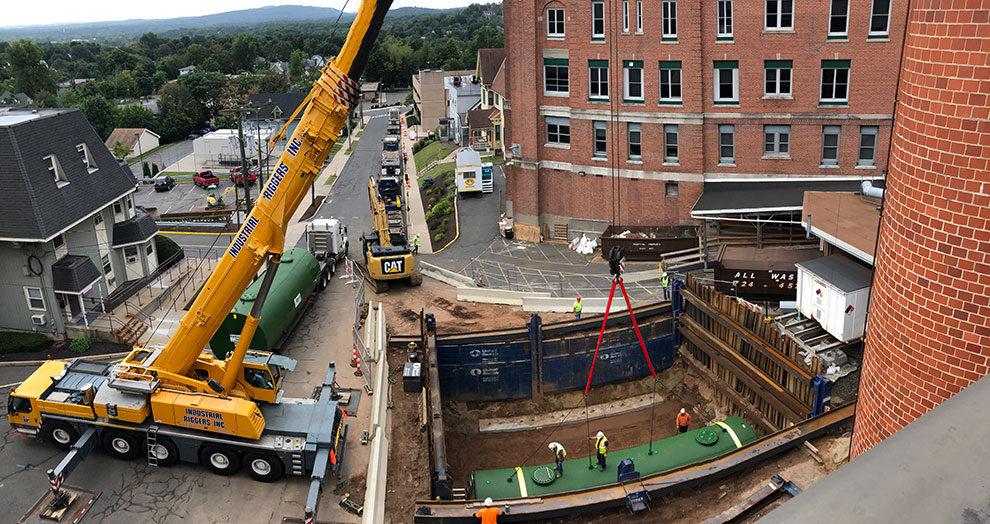
We performed our work around the hospital’s schedule to ensure that there was always a route available to not interrupt the daily functions of the hospital.
This project included:
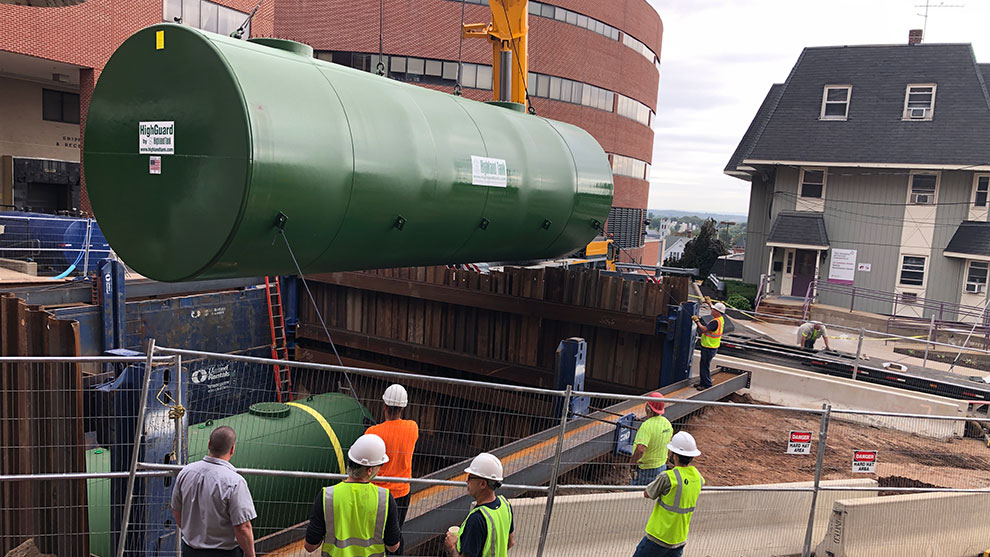
This expedited project was completed in 10 months, both on time and within budget. It also provided environmental benefits.
The original UST was No. 6 fuel, which has a high sulfur content that increases its polluting effects. The new UST is No. 2 fuel, which is a much more environmentally-friendly fuel. The new tanks provide reliable backup heat, and they do so in a way that is less harmful to the environment.
